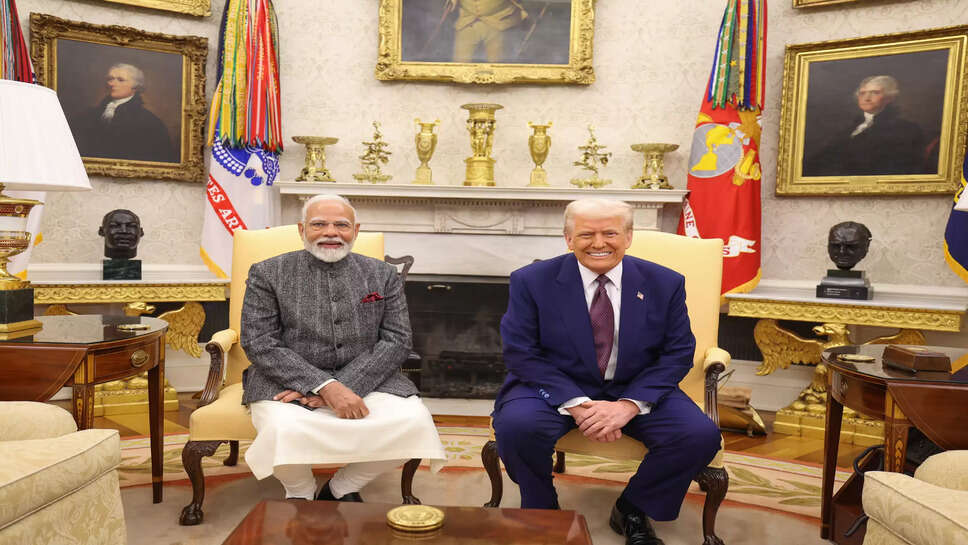Deadline Missed: US-India Tariff Negotiations Continue as Delegation Plans Mid-August Visit

As the August 1 deadline for resolving key trade issues between the United States and India passes without a breakthrough, uncertainty looms over the future of bilateral tariffs. A US trade delegation is now scheduled to visit India in mid-August, several weeks after the originally designated "hard deadline." The delay has sparked fresh concerns among industry observers, exporters, and policymakers in both countries, as it could have cascading effects on critical sectors such as electronics, agriculture, textiles, and renewable energy.
The Delayed Visit
The decision to send a US delegation later than planned reflects the complexity and sensitivity of trade negotiations between the two nations. The Biden administration has emphasized the need for a “fair and reciprocal” trading framework, while India continues to assert its right to protect its domestic industries and strategic sectors.
Sources close to the matter suggest that the visit will include mid-level trade officials and policy advisors rather than high-ranking diplomats or ministers. The agenda is expected to include discussions on outstanding tariffs, mutual recognition of standards, digital trade frameworks, and supply chain resilience initiatives.
The delay in face-to-face negotiations raises questions about the urgency with which both sides are treating the issue—especially as global trade becomes increasingly volatile in light of geopolitical shifts and rising protectionism.
The Missed August 1 Deadline
August 1 was set as a “hard deadline” to settle disputes related to tariff relaxations and retaliatory duties imposed during the Trump-era trade spats. While both sides have taken modest steps toward reconciliation—such as India lifting some retaliatory tariffs in exchange for preferential treatment for certain goods—the broader tariff ecosystem remains fraught with unresolved issues.
Critics argue that the failure to meet this deadline underscores a lack of alignment in trade priorities. American firms have long voiced frustration over India’s customs processes, import duties, and local compliance regulations, while Indian exporters worry about restricted market access and burdensome certification norms in the US.
What’s at Stake?
The stakes are high. The US is India’s largest trading partner in terms of goods and services, with bilateral trade crossing $190 billion in 2024. Sectors like defense, pharmaceuticals, semiconductors, and green energy are especially sensitive to regulatory changes and tariffs.
For Indian exporters, continued uncertainty around US duties on steel, aluminum, textiles, and agricultural products poses a serious threat. Meanwhile, American firms dealing in medical devices, solar technology, and e-commerce are pressing Washington to push for greater market access and regulatory transparency from New Delhi.
Moreover, businesses on both sides are grappling with disrupted supply chains, high freight costs, and shifting geopolitical allegiances—factors that magnify the impact of unresolved tariff issues.
US-India Trade Relations: A Mixed Bag
Historically, US-India trade relations have been marked by cooperation and confrontation in equal measure. The two nations have collaborated on several strategic initiatives, including defense deals and climate action plans. However, trade has often been a point of friction.
During the Trump administration, India was removed from the Generalized System of Preferences (GSP), a program that granted duty-free access to thousands of Indian products. In response, India imposed retaliatory tariffs on over two dozen American goods. While there have been attempts to reset the trade narrative under the Biden administration, significant differences remain, particularly around data localization, digital services tax, agricultural subsidies, and market access for dairy and meat products.
The Bigger Picture: Global Trade Volatility
The current delay in US-India tariff talks comes at a time of broader instability in global trade. The Ukraine conflict, US-China tech war, Red Sea shipping crisis, and increasing inflation in developed economies have all contributed to a rethinking of trade alliances and frameworks.
India is also navigating its own challenges, including negotiating free trade agreements with the EU, UK, and Australia, while trying to balance protectionist policies with its ambitions to become a global manufacturing hub.
The delay in the US delegation’s visit may also reflect strategic calculus—waiting for domestic political cycles in both countries to stabilize before finalizing any major decisions. With the US heading into election mode in 2025 and India’s general elections concluded recently, both governments might be cautious in committing to politically sensitive deals.
Industry Reactions and Concerns
Industry groups in both countries are expressing growing concern over the prolonged uncertainty. Indian industry chambers like FICCI and CII have urged the government to ensure smoother access to the American market for sectors like textiles, leather, and processed food.
Meanwhile, US-based trade associations such as the U.S.-India Business Council and the National Association of Manufacturers have lobbied for clearer investment rules, fewer tariffs on electronics and medical devices, and the restoration of GSP privileges for Indian goods.
Some Indian exporters have even warned that without clarity by the end of Q3 2025, they might shift focus to other markets with more predictable trade terms, such as the UAE, EU, or Southeast Asia.
Looking Ahead
The mid-August visit will be closely watched, not just for any immediate announcements, but also for indications of how seriously both countries intend to pursue a long-term resolution. Experts believe that a possible outcome of the visit could be the setting up of working groups to address sector-specific issues, rather than a single sweeping trade agreement.
It remains to be seen whether this round of talks can bridge the existing gaps or simply kick the can further down the road. What’s clear, however, is that the stakes for both economies are rising, and any prolonged indecision could have a chilling effect on investor confidence and trade momentum.
The postponement of the US delegation’s visit and the failure to meet the August 1 deadline underscore the complex dynamics at play in the US-India trade relationship. While both sides remain committed to deeper economic engagement, translating that intent into action is proving to be more difficult than expected. Whether the upcoming mid-August meeting can break the stalemate—or simply prolong the uncertainty—remains to be seen.
